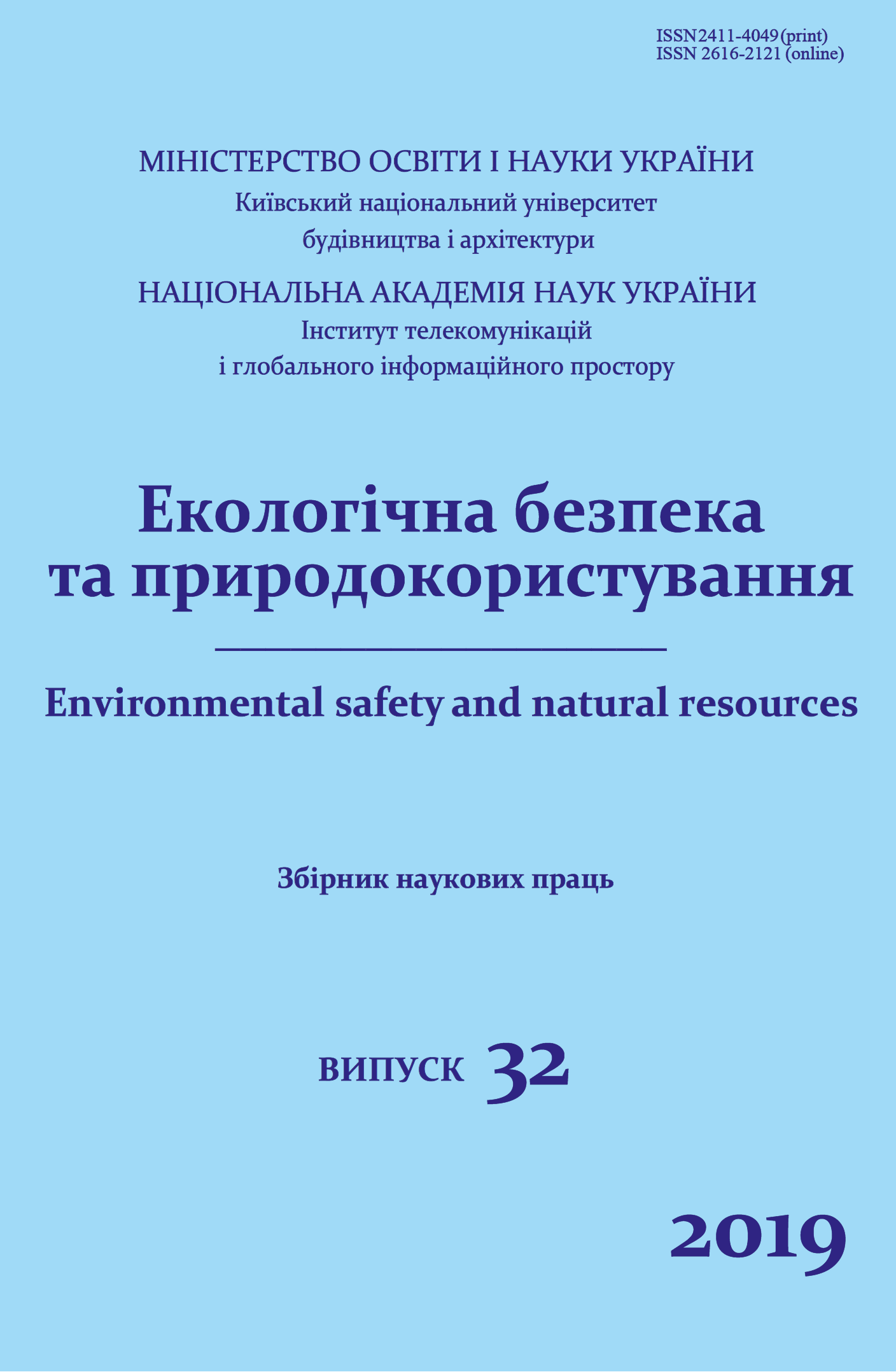Defense of beach by active coast-protecting structures
DOI:
https://doi.org/10.32347/2411-4049.2019.4.60-77Keywords:
recreation beach, coast-protecting structure, wave motion, dike dam, breakwater, wave pressureAbstract
The results of physical modeling of recreational beach protection by active protection methods are presented. The experiments were carried out in the wave pool on models of intermittent breakwaters with T-shaped and V-shaped traverses and dike dam systems. The use of active shore protection methods makes it possible to preserve natural and artificial beaches with the formation of a stable coastline. The geometrical parameters and hydrodynamic characteristics of the shore protection structures are established and recommendations for their operation are developed. Based on the research results, the dike dam system has been put into practice to protect the coastal strip of the “Urzuf” recreation complex on the shore of the Sea of Azov.
References
Khomicky, V. V. (1983). Pryrodo-okhrannye aspekty beregovoy gidrotekhniki. Кyiv: Naukova dumka. (in Russian).
Minvodkhoz USSR. Rekomendacii po proektirovaniyu beregoukrepitel’nykh sooruzheniy na vodokhranilischakh. (1987). Кyiv. (in Russian).
DBN В.1.1-25:2009. (2008). Zakhyst vid nebezpechnykh geologichnykh processiv. Osnovni polozhennya proektuvannya. Кyiv: Ministerstvo z pytan’ zhytlovo-komunal’nogo gospodarstva Ukraine. (in Ukrainian).
Schuisky, Yu. D. (2015). Osobennosti prirodnykh kompleksov v beregovoi zone morey. Visnyk Odes’kogo nacional’nogo universytetu. Geografichni ta geologichni nauky, 20(24), 97-113. (in Russian).
Mykhailichenko, S. Yu. (2018). Transformaciya poverkhnostnykh gravitacionnykh voln pri vzaimodeystvii s beregozashchitnymi sooruzeniyami v pribreznoy zone s real’nym rel’efom dna. Ekology. Ekonomics. Informations, 1(3), 65-70. (in Russian).
Gaivoronskaya, I. V. (2010). Plyaznaya zona kak ob’ekt integrirovannogo rekreacionnogo ispol’zovaniya. Mekhanizm regulyuvannya ekonomiky, 2(3), 209-215. (in Russian).
Мakarov, K. N., Prikhod’ko, V. А., & Radchenko, Е. V. (2016). Sovremennye metody povysheniya ustoichivosti rekreacionnykh plyazhey. Кurortno-rekreacionnyi komplex v sisteme regional’nogo razvitiya: Innovacionnye podkhody, 1, 255-258. (in Russian).
Anton, I.-A. (2017). Wave simulation with different type of coast protection structure – A comparative approach. International Journal of Environmental Science, 2, 171–176.
Leont’ev, I. O. (2018). Izmeneniya kontyra berega, vyzvannye poperechnym sooruzheniem v beregovoi zone morya. Geomorfologiya, (3), 32–39. (in Russian).
Dutta, D., & Kalita, H. M. (2019). Performances of straight head and T-head groynes as river training structures. IOP Conf. Ser.: Mater. Sci. Eng., 491, 012013-1-5.
Choufu, L., Abbasi, S., Pourshahbaz, H., Taghvaei, P. [et al.]. (2019). Investigation of flow, erosion, and sedimentation pattern around varied groynes under different hydraulic and geometric conditions: A numerical study. Water, (11), 235-1-18.
Martinelli, L., Ruol, P., Volpato, M., Favaretto, C. [et al.]. (2018). Experimental investigation on non-breaking wave forces and overtopping at the recurved parapets of vertical breakwaters. Coastal engineering, 141, 52-67.
Тuchkovenko, Yu. S., & Sakhnenko, О. I. (2017). Моdelirovanie transformacii vetrovykh voln v pribrezhnoi zone morya pri razlichnykh variantakh rekonstrukcii volnoloma. Ukrainskii gidrometereologichesrii j., (2), 175-185. (in Russian).
Khomicky, V., Tereshchenko, L., Abramova, L., Tereshchenko, I., [et al.]. (2019). Physical and mathematical modeling of permeable breakwaters. In: Hu Z., Petoukhov S., Dychka I., He M. (eds) Advances in Computer Science for Engineering and Education. ICCSEEA 2018. Advances in Intelligent Systems and Computing, 754, 3-12.
Di Lauro, E., Lara, J. L., Maza, M., Losada, I. J. [et al.]. (2019). Stability analysis of a non-conventional breakwater for wave energy conversion. Coastal engineering, 145, 36-52.
Lappo, D. D., Zhukovec, А. М., Мishchenko, S. S. (1979). Usloviya avtomodel’nosti v issledovaniyakh volnovogo dvizheniya zhidkosti. Izv. VINITI im. Vedeneeva, 132, 59-65. (in Russian).
Voskoboinick, V., Kornev, N., Turnow, J. (2013). Study of near wall coherent flow structures on dimpled surfaces using unsteady pressure measurements. Flow Turbulence Combust, 90(4), 709-722.
Voskoboinick, V. A., Voskoboinick, A. V., Areshkovych, O. O., & Voskoboinyk, O. A. (2016). Pressure fluctuations on the scour surface before prismatic pier. In Proc. 8th International Conference on Scour and Erosion (ICSE 2016) 12-15 September 2016 (pp. 905–910). Oxford.
Bendat, J., & Pirsol, А. (1974). Izmerenie I analiz sluchainykh processov. Мoscow: Мir. (in Russian).
Tereshchenko, L., Voskoboinick, V., Kudybin, I., & Voskoboinick, A. (2019). Statistical analysis of jet flow noise across bileaflet heart valve. In Abstract AMMODIT-2019 (pp. 52–53). Kyiv, Ukraine.
Vinogradnyi, G. P., Voskoboinick, V. A., Grinchenko, V. T., & Makarenkov, A. P. (1989). Spectral and correlation characteristics of the turbulent boundary layer on an extended flexible cylinder. J. Fluid Dyn., 24(5), 695-700.
Downloads
Published
How to Cite
Issue
Section
License
Copyright (c) 2019 Vitalii V. Khomicky, Volodymyr A. Voskoboinick, Anatolii G. Kharchenko, Oleksandr A. Voskoboinyk, Lidiia M. Tereshchenko, Andrey V. Voskoboinick, Ivan A. Nikitin

This work is licensed under a Creative Commons Attribution 4.0 International License.
The journal «Environmental safety and natural resources» works under Creative Commons Attribution 4.0 International (CC BY 4.0).
The licensing policy is compatible with the overwhelming majority of open access and archiving policies.

